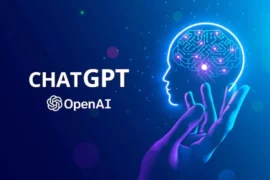A Brief History of The Generative Pre-trained Transformer (GPT) Language Models

The development of language models has come a long way since its inception. The earliest language models were rule-based systems that required significant human input to function. However, with the advent of machine learning and deep learning techniques, the complexity and accuracy of these models have increased dramatically. This article will explore the history and progression of Generative Pre-trained Transformer (GPT) language models from the earliest to the latest.
2018: GPT-1
The first GPT model, GPT-1, was introduced by OpenAI in 2018. It contained 117 million parameters and was pre-trained on a large corpus of text data. The model was trained using an unsupervised learning technique, where it was given no specific task but to predict the next word in a sentence. GPT-1 was groundbreaking as it could generate coherent sentences and even paragraphs, which were almost indistinguishable from those written by humans.
2019: GPT-2
The second iteration, GPT-2, was introduced in 2019. It was a more sophisticated version of its predecessor, with 1.5 billion parameters, allowing it to generate longer and more coherent text. However, GPT-2 was considered controversial, as its creators deemed it too powerful and withheld its full version. They were concerned that the model could be used to generate fake news and other forms of misleading content, potentially causing harm.
2020: GPT-3
In 2020, OpenAI introduced GPT-3, the most advanced and largest language model yet, with a whopping 175 billion parameters. GPT-3 is capable of generating text that is virtually indistinguishable from human-written content. Its creators trained it on an enormous corpus of text data, including books, articles, and web pages. GPT-3’s performance has been exceptional, and it has been used in various applications, such as natural language processing, text classification, and chatbots.
2022: GPT-3.5 Turbo (ChatGPT)
The release of ChatGPT and GPT-3.5 Turbo has been a significant development in the field of natural language processing. ChatGPT is a conversational AI model that can engage in human-like conversations with users. It is based on the GPT-3 architecture and was released by OpenAI in late 2022. ChatGPT has been trained on a large corpus of conversational data, which allows it to understand and respond to natural language queries.
2023: GPT-4
Generative Pre-trained Transformer 4 (GPT-4) is a multimodal large language model created by OpenAI and the fourth in its GPT series. It was released on March 14, 2023, and has been made publicly available in a limited form via ChatGPT Plus, with access to its commercial API being provided via a waitlist. As a transformer, GPT-4 was pretrained to predict the next token (using both public data and “data licensed from third-party providers”), and was then fine-tuned with reinforcement learning from human and AI feedback for human alignment and policy compliance.
Compared with its November 2022 predecessor, ChatGPT, observers reported GPT-4 to be an impressive improvement on ChatGPT, with the caveat that GPT-4 retains some of the same problems. Unlike ChatGPT, GPT-4 can take images as well as text as input. OpenAI has declined to reveal technical information such as the size of the GPT-4 model.
Overall Progression of GTP Language Models
The progression of GPT language models has been significant, both in terms of their size and accuracy. GPT-1, with 117 million parameters, could generate coherent text, but it was still limited in its capabilities. GPT-2, with 1.5 billion parameters, could generate longer and more coherent text, but it was also deemed too powerful to be released in its full version. GPT-3, with 175 billion parameters, has taken language models to a whole new level, generating text that is almost indistinguishable from human-written content, and GPT-4 promises to totally change the game understanding more than text, such as images.
The Importance of Deep Learning
The development of GPT language models has been made possible by the evolution of deep learning techniques. These techniques involve training neural networks on large amounts of data, allowing them to learn complex patterns and relationships in the data. GPT models use a specific type of neural network called the Transformer, which was introduced in a paper by Vaswani et al. in 2017. The Transformer is a self-attention mechanism that allows the model to focus on specific parts of the input data while generating output.
The progression of GPT language models has had a significant impact on natural language processing and other applications that rely on text data. These models have the potential to automate many tasks that were previously performed by humans, such as generating news articles, writing product descriptions, and even composing music. However, there are also concerns about the ethical implications of these models, such as their potential to generate fake news and other forms of misleading content.
Conclusion
The progression of GPT language models has been remarkable, from the earliest GPT-1 model to the latest GPT-4 model. These models have been made possible by the evolution of deep learning techniques and have the potential to revolutionize natural language processing and other applications that rely on text data. However, as with any new technology, there are ethical concerns that need to be addressed to ensure that these models are used for the benefit of society.







